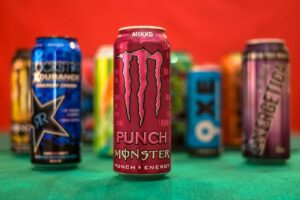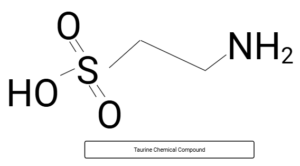
We all know caffeine. It’s the ingredient everyone warns us about in energy drinks, the one that keeps us up and alert. But what if caffeine isn’t the only thing worth paying attention to?
For a lot of high school students, energy drinks have basically become part of the routine. Whether it’s staying up late to finish assignments or trying not to fall asleep in class, grabbing a can of Monster or Red Bull feels normal. Because of that, caffeine intake among teens has gone up by more than 70 percent in recent years. But even with all the warnings about caffeine, we rarely hear about the other ingredients in these drinks. One of the most common? Taurine.
Taurine is an amino acid your body makes naturally. It also comes from foods like meat, fish, and eggs. Inside your body, taurine is stored in places like your bone marrow, heart, lungs, and muscles. It helps with energy production and keeps your cells running properly. That’s why companies add it to energy drinks; to support focus and give that boost people crave. But recently, researchers have started to ask more questions about how taurine works, especially when it’s consumed in large amounts.
In May 2025, scientists at the University of Rochester found that in lab settings, leukemia cells used taurine from their surroundings to grow and multiply. Leukemia is a type of cancer that starts in the bone marrow and causes abnormal white blood cells to crowd out the healthy ones. These cancer cells can’t make taurine on their own. Instead, they rely on something called a taurine transporter to absorb it from nearby normal cells. Think of it like food delivery systems. The leukemia cells don’t cook for themselves, they wait for the taurine to be delivered, and then they use it to fuel their growth.
The researchers didn’t test energy drinks directly, and this study was done in a lab, not in actual patients. That’s important to keep in mind. The study isn’t saying that drinking Red Bull causes cancer. But it does raise questions about what happens when taurine is present in high amounts, and how it might behave in different environments inside the body.

Taurine has been used in some cases to help cancer patients deal with the side effects of treatment. It’s also considered safe in small amounts by the FDA. But energy drinks can contain way more taurine than we usually get from food. A single can of Monster or Red Bull has around 1,000 milligrams of taurine. That’s a lot more than a serving of meat or fish. Most people don’t even realize how much they’re drinking because taurine isn’t usually talked about. It just shows up on the label next to everything else.
So should people stop drinking energy drinks completely? Not necessarily. That’s not the point of this. The point is to pay more attention. We hear so much about caffeine that it’s easy to ignore the rest of the ingredients. But if taurine is helping cancer cells survive in certain conditions, even in a lab, that’s something worth looking into. Especially when so many teens drink these products regularly without knowing what’s actually in them.
Energy drinks aren’t going anywhere. They’re convenient, easy to find, and pretty much everywhere. But just because they’re common doesn’t mean we shouldn’t ask questions. Research like the Rochester study doesn’t give us a final answer, but it gives us something to think about. It reminds us that ingredients we assume are safe might have effects we haven’t fully studied yet. Caffeine may be the most talked about part of energy drinks, but it’s not the only part that matters. Taurine might not be dangerous on its own, but it’s also not something we should ignore. The more we learn, the better choices we can make, not out of fear, but because we actually know what we’re putting in our bodies.
Authors: Makenzii Walker and Sai Siri Surapaneni
Edited by: Raeanne Lanphier and Elizabeth Abrash